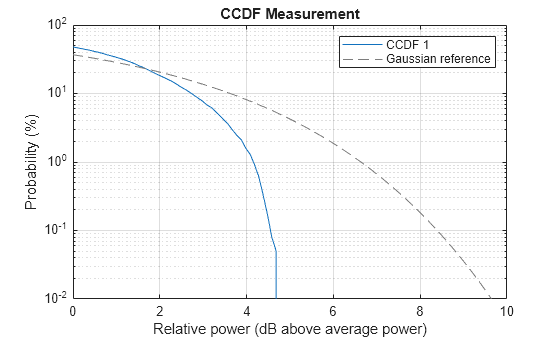relativePower
Description
relpower = relativePower(meter,prob)relpower for a specified probability
prob, such that the instantaneous signal power is above the average
signal power by relpower dB with probability
prob/100. To enable this syntax, set the computeCCDF property to true in the powermeter
System object™.
Examples
Input Arguments
Output Arguments
Version History
Introduced in R2022a
